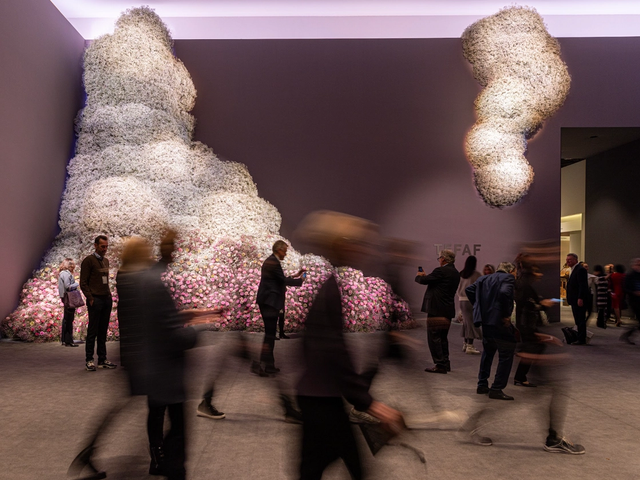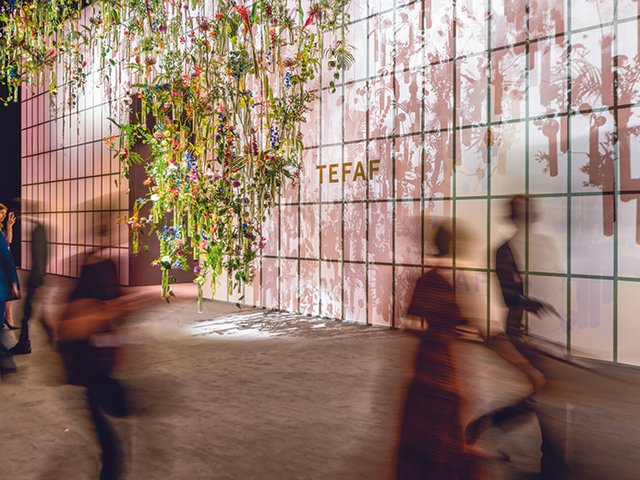It suggests a degree of confidence to publish a report on the damage wrought by the recession on the international art market on the eve of the opening of a major art fair. But that is what the European Fine Art Foundation, the organiser of the European Fine Art Fair (Tefaf) Maastricht, plans to do in the southern Dutch city this month. Ben Janssens, chairman of the art dealers’ co-operative that runs and owns the fair—considered to be the most important fair devoted to art and antiques in the world—says publishing the report is all part of Tefaf’s efforts “to keep up with what is happening and to strive for clarity and transparency in everything we do. If you are going to be completely, brutally honest you can’t ignore the way the economy has affected the market.”
An admirable sentiment—but one somewhat easier for a fair in Tefaf’s position to express. Evidence from last year’s fair and the new report suggests that the old master market, and European galleries, have been less badly affected than the contemporary market, or their US and UK counterparts. “The positive message in the report is that if you look at the art market, it hasn’t been hurt so very badly at all, compared with the impact on the banks, and if that encourages people to come and look at things which hold their value better, we may well see a benefit to our business,” Janssens says.
From its modest beginnings in 1975, with just 28 exhibitors, the 23rd edition will present 260 galleries—of which just 22 are new or returning after a break. Eighteen of these are showing in a newly created section for works on paper (see below). Janssens, who became chairman of the organising committee in 2007, has introduced a new section to the fair each year: Showcase, for younger galleries, in 2008; Design in 2009 and now Paper—although this will probably be the last. “For the past 10 years we have had quite a substantial waiting list, while galleries very rarely drop out, and yet we wanted to be able to introduce something new,” Janssens says. Now the Maastricht Exhibition and Congress Centre is, according to Janssens, stretched to its limit.
Design, with nine exhibitors, is one of the smallest sections in the fair: the largest are Antiques and Works of Art (97 galleries) and Paintings, Drawings and Prints (64 galleries). Works range in date from antiquities to the present day. Highlights of the fair include Deux Femmes by Paul Gauguin, 1902, with Dickinson for a price in the region of €18m; and The Courtenay Compendium, a collection of tracts dating to the 14th century. It includes a rare manuscript relating to traveller Marco Polo (with Jörn Günther Rare Books, €2.5m).
“One of the characteristics that makes Maastricht so special is the quality of the works on show: many galleries, mine included, keep pieces back especially to bring to the fair, because we all really want to show the best of the best,” says Jorge Welsh of Jorge Welsh Oriental Porcelain and Works of Art. His gallery, based in London and Lisbon, focuses on ceramics and objects connected to the Portuguese expansion of the 15th century and its trade with Africa, India, Asia, and Japan. Among his offerings is a 16th-century brass plaque from the gates of the Oba’s palace in Benin: unusually, it features a Portuguese figure rather than an African dignitary. With only around 60 such plaques in existence, it is priced at a six figure sum.
Other highlights include works with Bernheimer-Colnaghi, including The Virgin and Child with the Young Saint John the Baptist, recently identified by Everett Fahy, formerly the Metropolitan Museum’s chairman of European paintings, as a work by the Master of the Holden Tondo, active in Florence in the 1490s.
o The International Art Market 2007-2009: Trends in the Art Trade during Global Recession, Dr Clare McAndrew of Arts Economics www.artseconomics.com



